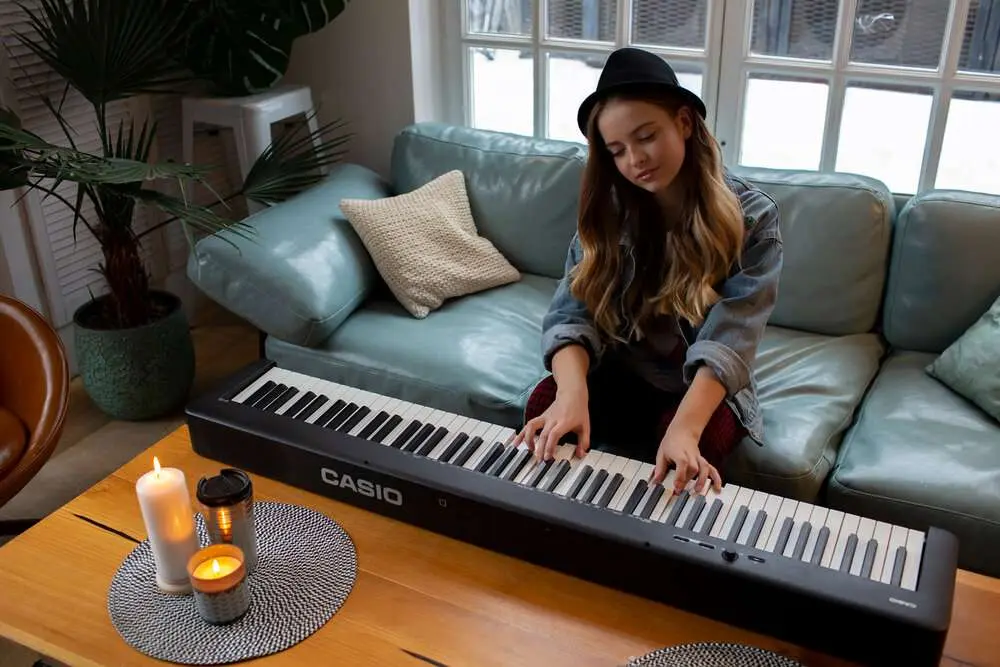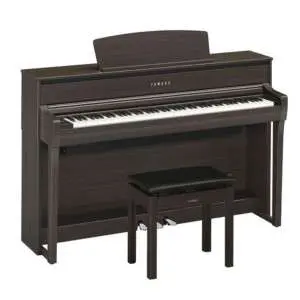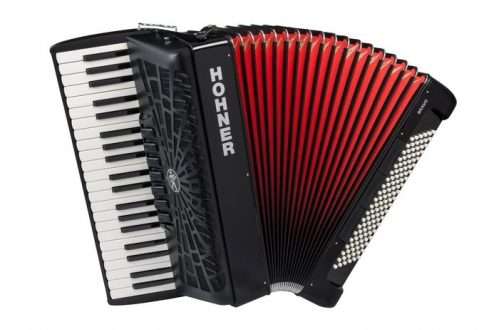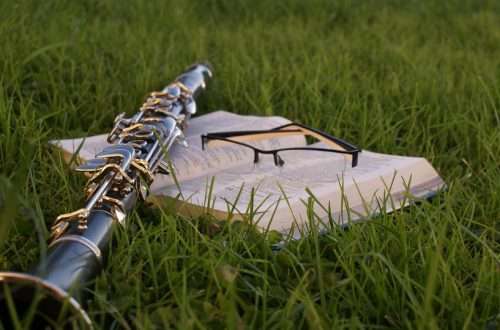
Choosing a digital piano for a music school
Contents
Compared to acoustic models, digital pianos are compact, portable and have a wide range of learning opportunities. We have compiled a rating of the best instruments for a music school.
This includes pianos from manufacturers Yamaha, Kawai, Roland, Casio, Kurzweil. Their price matches the quality.
Overview of digital pianos for classes in a music school
The best digital pianos for a music school are Yamaha, Kawai, Roland, Casio, Kurzweil brands. Let’s take a closer look at their characteristics, features and benefits.
 Yamaha CLP-735 is a mid-range instrument. Its main difference from analogues is 303 educational pieces: with such a variety, a beginner is bound to become a master! In addition to these tunes, the CLP-735 has 19 songs that showcase how the voices sound , as well as 50 piano pieces. The instrument has 256- voice polyphony and 36 tones of the flagship Bösendorfer Imperial and Yamaha CFX grand pianos. Duo mode allows you to play melodies together – a student and a teacher. The Yamaha CLP-735 provides enough learning options: 20 rhythms, luminosity, chorus or reverb effects, headphone inputs, so you can practice at a convenient time and without disturbing others.
Yamaha CLP-735 is a mid-range instrument. Its main difference from analogues is 303 educational pieces: with such a variety, a beginner is bound to become a master! In addition to these tunes, the CLP-735 has 19 songs that showcase how the voices sound , as well as 50 piano pieces. The instrument has 256- voice polyphony and 36 tones of the flagship Bösendorfer Imperial and Yamaha CFX grand pianos. Duo mode allows you to play melodies together – a student and a teacher. The Yamaha CLP-735 provides enough learning options: 20 rhythms, luminosity, chorus or reverb effects, headphone inputs, so you can practice at a convenient time and without disturbing others.
Kawai KDP110 wh is a music school model with 15 timbres and 192 polyphonic voices. Students are offered etudes and plays by Bayer, Czerny and Burgmüller for learning. A feature of the instrument is comfortable work in headphones. The sound realism of the model is high: this is provided by the Spatial Headphone Sound technology for headphones. They connect to KDP110 wh via Bluetooth, MIDI, USB ports. You can choose the sensitivity of the keyboard in 3 sensor settings depending on the style of the performer – this simplifies the learning process. The model allows you to record 3 melodies with a total volume of 10,000 notes.
Yamaha P-125B – the choice with the best value for money. Its feature is support for the Smart Pianist application for iOS devices, which is convenient for owners of smartphones or tablets, iPhone and iPad. The Yamaha P-125B is transportable: its weight is 11.5 kg, so it is easy to carry the instrument to class and back home or to reporting performances. The design of the model is minimalistic: everything here is aimed at ensuring that the student learns as quickly and efficiently as possible. Yamaha P-125B has 192-voice polyphony, 24 timbres , 20 built-in rhythms. Students should take advantage of 21 demos and 50 built-in piano melodies.
The Roland RP102-BK is a music school instrument with an 88-key PHA-4 keyboard, 128-note polyphony and 200 built-in learning songs. The built-in hammer action makes the piano play expressive, and the 3 pedals give the sound a resemblance to an acoustic instrument. With SuperNATURAL Piano technology, playing the Roland RP102-BK is indistinguishable from playing a classic piano with 15 realistic sounds , 11 of which are built-in and 4 are optional. The model has 2 headphone jacks, Bluetooth v4.0, USB port 2 types – everything to make learning comfortable and fast.
Casio PX-S1000WE is a model with a Smart Scaled Hammer Action keyboard mechanism, 18 timbres and 192-note polyphony, which has positive reviews. The mechanics of the keyboard allows you to play complex melodies, so the student quickly improves in skill. The model weighs 11.5 kg – it is convenient to transport it from school to home. There are 5 levels of key sensitivity adjustment: this allows you to customize the piano for a specific performer. With an increase in skill, the modes can be changed – in this regard, the model is universal. The music library includes 70 songs and 1 demo. For training, a headphone jack is provided, so you can rehearse songs at home.
The Kurzweil KA 90 is a digital piano that should be included in the review due to its portability, average cost and wide learning opportunities. The keyboard of the model has a hammer action , so the keys are sensitive to touch – this option is configurable. The instrument has a split keyboard, which is convenient for joint performance with a teacher. Polyphony has 128 voices; built-in 20 timbres violin, organ, electric piano. The KA 90 offers 50 accompaniment rhythms; 5 melodies can be recorded. There are 2 outputs for headphones.
Digital Pianos for Learning: Criteria and Requirements
A digital piano for a music school must have:
- One or more Voices that will closely match the sound of an acoustic piano.
- Hammer action keyboard with 88 keys .
- Built-in metronome.
- At least 128 polyphonic voices.
- Connect to headphones and speakers.
- USB input for connecting a smartphone, PC or laptop.
- Bench with adjustment for the correct sitting at the instrument. This is especially important for the child – his posture should be formed.
How to choose the right model
Knowing the technical characteristics, design features of a digital piano of a particular manufacturer will allow you to choose the right instrument for a particular performer. We list the main criteria that must be followed when choosing:
- versatility. The model should be suitable not only for the music class, but also for homework. Lightweight tools are recommended to make them easy to transport;
- keys with different weights. In the lower case , they should be heavy, and closer to the top – light;
- the presence of a headphone jack;
- built-in processor, polyphony , speakers and power. The realism of the sound of the instrument depends on these characteristics, and they affect its cost;
- a weight that would allow one person to move the piano.
Answers on questions
When choosing a digital piano for a student, the following questions often arise:
| 1. What models are correlated according to the criterion “price – quality”? | The best instruments include models from well-known manufacturers Yamaha, Kawai, Roland, Casio, Kurzweil. They are worth paying attention to due to the ratio of quality, functions and cost. |
| 2. Is it worth considering budget models? | They are not well thought out for initial classes and are not suitable for professional activities. |
| 3. How many keys should a digital piano have for learning? | Minimum 88 keys. |
| 4. Do I need a bench? | Yes. An adjustable bench is especially important for a teenager: the child learns to keep his posture. Not only competent execution, but also health depends on the correctness of its position. |
| 5. Which piano is better – acoustic or digital? | The digital piano is more compact and affordable. |
| 6. What type of keyboard do you need? | Hammer with three sensors. |
| 7. Is it true that digital pianos don’t sound the same? | Yes. The sound depends on the Voices that were taken from the acoustic instrument. |
| 8. What additional digital piano features might be useful? | The following features are useful, but not required:record; built-in auto accompaniment styles a; keyboard separation; layering timbres ; slot for memory cards; bluetooth. |
The choice of a digital piano for classes in a music school should take into account the level of preparation of the student and the further development of his education and career. If a teenager plans to play music professionally, it is worth buying an instrument with a set of useful features. Its price will be more expensive compared to cheaper counterparts, but the model will allow you to acquire useful skills.





